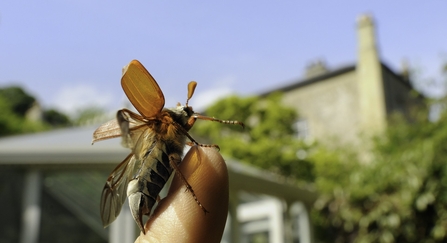Emerging in May, these large brown beetles transform from larvae that have spent up to five years underground, eating plant roots and matter until they are large enough to pupate. Due to their huge, and seemingly relentless, appetites, they have in the past been persecuted almost to point of extinction and suffered the effects of heavy pesticide use. Having tales to tell such as the time in the 14th century when France put the entire species on trial for destroying crops, they were exiled to a reserve with strict instructions to behave in a more orderly fashion and to not eat crops. Not being able to resist, cockchafers were then unfortunately detained and killed.
This treatment was not nearly as devastating to numbers however compared to their treatment in the early 20th century when heavy pesticide use almost wiped out the species, with 20 million individuals collected and killed in just 18km2 in order to break up their life cycle.
Due to pesticide regulation, numbers of cockchafers UK are now recovering and they are now a little more appreciated with people looking out for their emergence each year and we were certainly delighted to see our first one last week!

